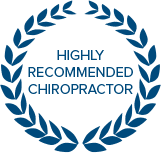What You Should Know

A study by David C. Classen, M.D. and colleagues at LDS Hospital in Salt Lake City, found that adverse drug reactions to medications prescribed by hospital staff members account for up to 140,000 deaths annually in the United States and cost more than $136 Billion. (Let's Live Vol 65 No 12, 1997)
Timothy S. Lesar, Pharm. D., director of Albany Medical Center in New York, and colleagues detected 11,186 hospital drug-prescribing errors over a nine-year period. Significant prescription drug mistakes detected at the center increased from 522 in 1987 to 2,115 in 1995, according to Medical Tribune. (Let's Live Vol 65 No 12, 1997)
Raymond Woosley, M.D., Ph.D. chairman of pharmacology at Georgetown University School of Medicine in Washington D.C., is quoted as saying that more than 40 percent of prescription errors lead to adverse side effects, including death (Let's Live Vol 65 No 12, 1997)
According to a report by the Harvard Medical Practice Study Group in Cambridge, Massachusetts, 80,000 individuals die every year ---that's a person every 7 minutes. And, according to a 1993 report from the Harvard University Press, some 150,000 to 300,000 more were injured annually from medical negligence in hospitals.
Antibiotics may not be the best way to treat ear infections. A study from the University of Pittsburgh found that children treated with Amoxicillin recovered no faster then children treated with a placebo, and the children treated with the antibiotics were even more likely to have recurring infections. (Journal of the American Medical Association December 18, 1991)
Allergy injections were found to be of no benefit in a study of 121 allergic children with year-round asthma who were on appropriate treatment for their asthma. (New England Journal of Medicine January 30, 1997)
Incorrectly prescribed medications claim more American lives than crime and car accidents combined, with an annual death toll estimated at more than 180,000 individuals per year. This estimated death toll is equivalent to three fully-loaded, wide-bodied jets crashing every other day.
- One in twelve Americans is choosing chiropractic.
- A study in the New England Journal of Medicine found that patients in 1990 made 425 million visits to alternative practitioners, mostly chiropractors, compared with 388 million visits to family physicians or other primary physicians.
- A New England Commission study found that many patients turned to chiropractic after other medical approaches had failed to help them.
- New government guidelines for low-back pain frown on surgery and other medical patients care procedures, recommending "spinal adjustments" as effective alternatives.
- Studies show chiropractic is an effective and less costly method of caring for neuromusculoskeletal conditions (such as headaches; neck, back, shoulder, arm, and leg pain; or any discomfort relating to muscle spasms, strain and pain). A 40% to 50% savings results when chiropractic is the regimen of choice. What a doctor of chiropractic offers for such health care savings are conservative, early-intervention methods, as opposed to surgery, drug treatments and high-cost therapies.
| OFFICE HOURS |
| Monday | 10:00am - 3:00pm |
| Tuesday | 10:00am - 3:00pm |
| Wednesday | 10:00am - 3:00pm |
| Thursday | 10:00am - 3:00pm |
| Friday | 10:00am - 3:00pm |
| Saturday | Closed |
| Sunday | Closed |

Atlas Orthogonal Chiropractic
18124 Culver Drive #G
Irvine, CA 92612
(949) 786-8802

For More Information on the Atlas Orthogonal Chiropractic Technique, please visit the official website of Dr. Roy Sweat, founder of Atlas Orthogonal Chiropractic.







